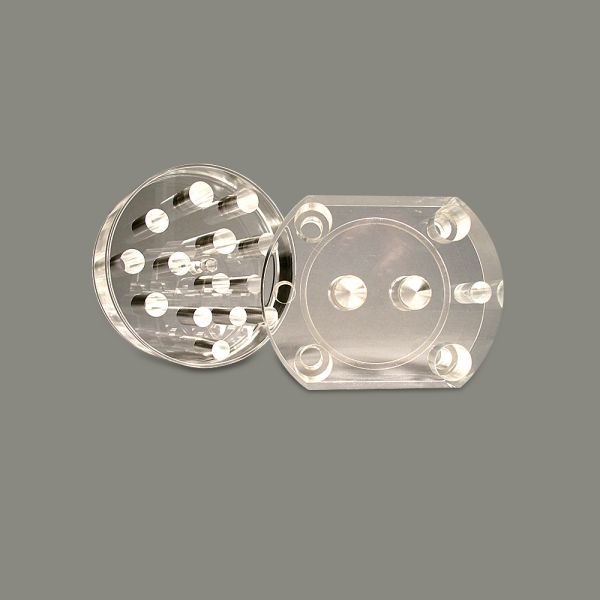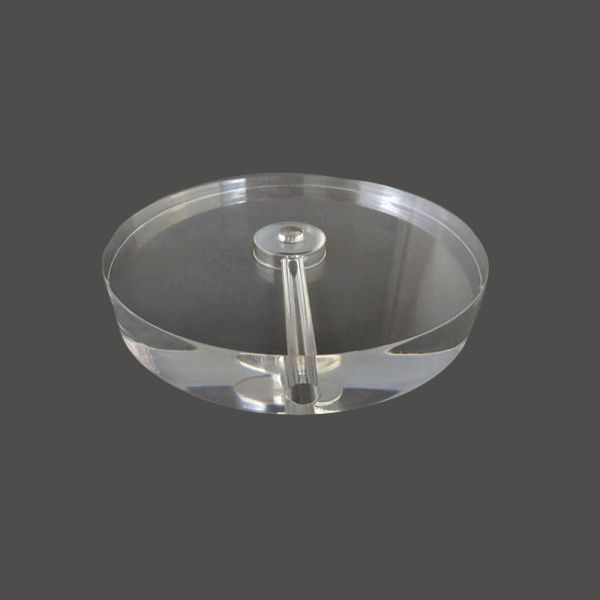
Privacy statement: Your privacy is very important to Us. Our company promises not to disclose your personal information to any external company with out your explicit permission.
What is CNC Machining?
CNC (computer numerical control) machining is a manufacturing process that uses computer-controlled mechanical equipment to cut, shape, and process materials. In CNC machining, a computer program is used to control the movement of mechanical equipment, which includes lathes (CNC turning), milling machines, and 3D printers. The program is designed to accurately follow user-supplied instructions to perform precise and repeatable cutting and molding operations.
What is PMMA and why is it used in CNC machining?
PMMA, or polymethylmethacrylate, is a plastic known for its transparency, strength and durability. Due to its physical structure, PMMA is resistant to UV light and has good weathering properties, making it suitable for outdoor applications. These physical properties make PMMA well suited for applications where transparency is critical, such as signage and displays. It is also used in applications subject to wear and tear, such as automotive parts.
Methyl acrylate is also a common alternative to glass because of its significant cost-effectiveness. For example, at the time of this article's publication, a 12 "x12 "x0.25" borosilicate glass sheet costs $49.60, while a 12 "x12 "x0.25" Clear Acrylic Sheet costs $8.46 - a huge price difference.
PMMA is a popular choice for CNC machining because it is easy to machine and can be machined to exacting tolerances. Its relative ease of machining, toughness (more than 10 times tougher than silica glass) and ease of handling make it a common choice even for complex parts. For manufacturing PMMA for CNC machining, there are two manufacturing methods: casting and extrusion. Casting creates less internal stress, so cast methyl acrylate is less brittle than extruded methyl acrylate and more suitable for CNC machining processes. Ultimately, the choice between cast or extruded PMMA depends on your desired manufacturing process and product application.
Pro Tip: Whether you want to design your next project using PMMA or any other material, check out our helpful Design for CNC Machining Master Course, where you'll learn how to minimize the challenges of CNC machining and design parts that are cheaper, faster, and less risky.


Common Uses for PMMA (polymethylmethacrylate)/acrylic acid
Display Equipment: Due to its transparency and ability to protect displays from damage, dust and moisture, PMMA is commonly used in showcases, point-of-sale displays and other types of retail displays.
Prototyping: Due to its low cost and high processability for a wide range of shapes and sizes, PMMA is a popular material for prototyping. For complex mechanical parts, PMMA is also very useful as investors, stakeholders and other departments can see the inner workings of the design.
Signage: As mentioned earlier, PMMA is commonly used for signage due to its transparency and ability to be machined into a variety of shapes and sizes. Due to its transparency, PMMA can be illuminated to create great looking designs, so it is commonly used for store fonts, signage, and other markings.
Medical Devices: PMMA is widely used in the medical industry due to its biocompatibility, reliability and low toxicity. PMMA is found in many medical industry components such as prosthetics, artificial joints, fasteners, contact lenses and even bone cement.
Lighting: PMMA is commonly used in the lighting industry due to its optical transparency or light transmitting properties. It is commonly used in light diffusers, lenses and other lighting components.
Automotive: In the automotive industry, PMMA is used in a variety of applications, including headlights, taillights and other lighting components, as well as interior and exterior trim.
Architectural: In the construction industry, PMMA is used in a variety of applications, including window glass, skylights and other transparent architectural elements.
Key Tips for CNC Machining PMMA/Acrylic
1. Tool selection: Because PMMA is a relatively soft material, sharp and carefully selected cutting tools are required to prevent tool wear and breakage. High-speed steel (HSS) tools are usually the best choice for machining PMMA, although carbide and drill-plated tools can also be used. Only use tools specified for plastics machining to cut PMMA. A good rule of thumb is to use a high shear edge geometry (1- or 2-flute tool) with an edge rake angle of approximately 5° and a clearance angle of 2°.
2. Cutting Speed: Due to the relatively low melting point of PMMA, it is critical to use moderate to low cutting speeds when machining this material. Excessive cutting speeds may cause the material to melt or deform, resulting in poor surface quality and tool wear.
3. Feed Rate: Check out this study that shows the effect of feed rate on cut edge quality when machining PMMA. The study shows that a feed rate set at 75% of the tool break rate is optimal for cutting edge quality. A more comprehensive white paper on machining acrylic with diamond micromilling can be found here.
4. Coolant: Due to PMMA's low coefficient of thermal expansion, it is a good idea to use coolant when machining this material. Coolants help prevent the material from overheating and improve surface quality. Since PMMA is compatible with a wide variety of solutions, it is not difficult to find a suitable coolant.


LET'S GET IN TOUCH

Privacy statement: Your privacy is very important to Us. Our company promises not to disclose your personal information to any external company with out your explicit permission.

Fill in more information so that we can get in touch with you faster
Privacy statement: Your privacy is very important to Us. Our company promises not to disclose your personal information to any external company with out your explicit permission.